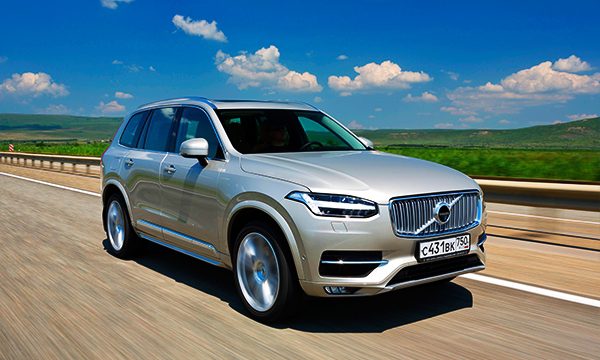
Test drive Volvo XC90
Content
On a bumpy road in the vicinity of Stavropol, where the markings appear and then suddenly disappear in deep potholes, Volvo behaves very calmly, displaying delicate messages on the dashboard screen ...
The safest in the class, with new high-tech engines and, what is important for Volvo, very charismatic - the XC90 became popular on the world market even before it entered it: by mid-March, the Swedes had already received about 16 pre-orders. Almost simultaneously with the start of sales, we tested it in Spain. The crossover left the impression of an adult, very stylish and high-quality car, which is ready to compete on equal terms with the premium standards of its segment. Now it's time to test in Russian conditions with disappearing markings (extremely necessary for adaptive cruise control) and an uncompromising road for the delicate suspension. The North Caucasus is not refined Gothenburg for you.
How does the XC90 navigate the road when there is no road?
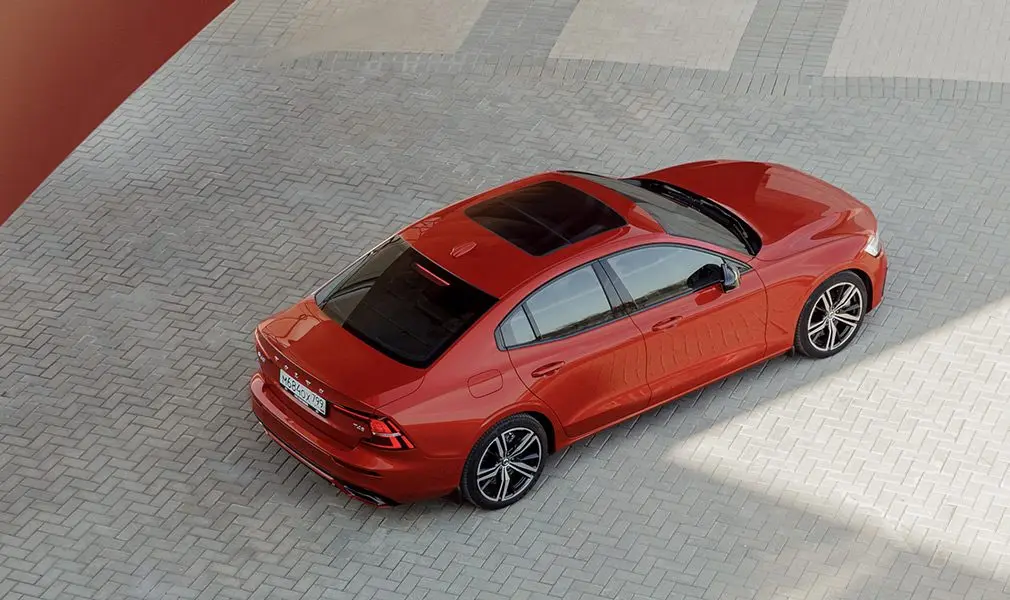
One of the main features of the new Volvo is its many driver assistance systems. Including adaptive cruise control, which is able to take over control for a while. On a bumpy road in the vicinity of Stavropol, where the markings appear and then suddenly disappear in deep potholes, Volvo behaves very calmly, displaying delicate messages on the dashboard screen like: "Would you like to take control?" Even in those places where the asphalt has not been repaired since the last century, the XC90 regularly steers in corners, accelerates, brakes and duplicates road signs on the monitor. The only thing missing is a pair of drones above the crossover, which would suggest oncoming cars: overtaking on a winding track is not easy.
The roads in the southern regions are a lottery. If in Stavropol or Gelendzhik itself the situation is still normal, then it is very reckless to go on country roads without a spare wheel in the trunk. For the new XC90, this component is optional: the thick rubber profile is difficult to punch through. The presence of markings is much more important for a crossover. The Volvo engineers who developed the security systems probably did not test the system anywhere near Goryachy Klyuch, where markings are generally a rarity.
Electronics, using scanners and sensors, constantly monitors the position of the car on the road and, if necessary, steers it. Now Volvo is guided only by the markings, but in the future, engineers promise to teach the system to see the roadside so the car can drive on its own even in the most difficult conditions. Nowadays, adaptive cruise control is more of a brand demonstration than a full-fledged driver substitute. You cannot remove your hands from the steering wheel (the system will quickly notice this and warn you about the subsequent shutdown), and the electronics steer only in very gentle arcs.
"80", "60", "40". Road signs appear on the dashboard one by one, then they repeat and start blinking. As you approach the multi-ton truck, the crossover begins to slow down. I would like to speed up: there are no oncoming people ahead and a dashed marking line began, but here the electronics intrusively intervenes. Not only does it prevent acceleration, it also begins to vibrate the steering wheel when crossing the markings. Oh, yes, I forgot to turn on the "turn signal". If 5 years ago Volvo taught us to drive safely, now they force us to do it.
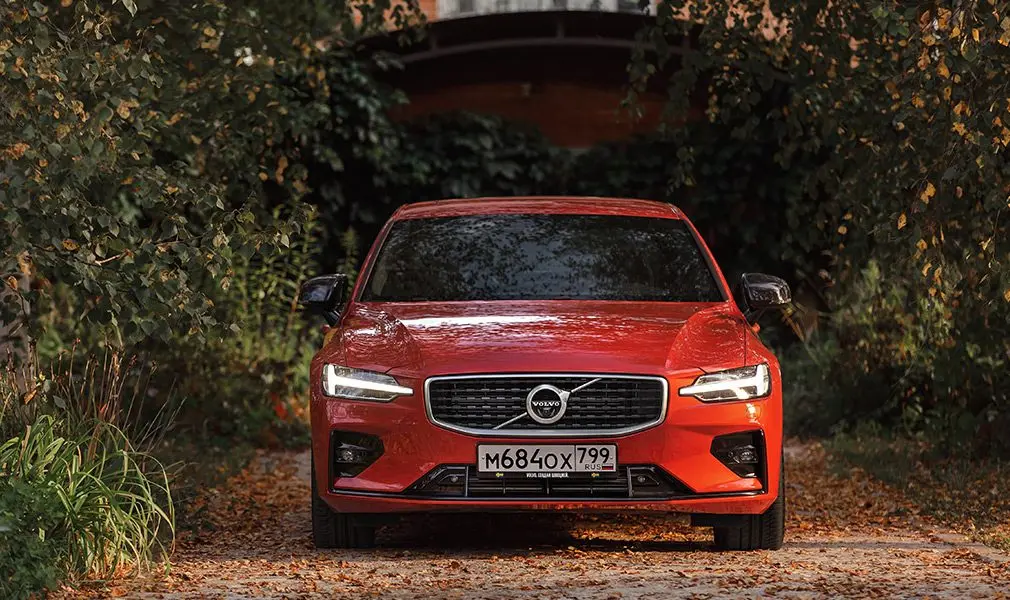
Where is the XC90 better not to drive?
Where there is no asphalt, the XC90 feels more confident than its predecessor: the crossover now has air suspension. With its help, you can increase the ground clearance to 267 mm (with a conventional spring suspension, the clearance of the XC90 is 238 mm). But unlike the highway, here you should not expect the crossover to do everything on its own. Moreover, the air suspension is very afraid of hanging the rear wheels. One has only to admit an awkward movement, as the electronics will immediately warn of an error and ask you to drive onto an even surface to calibrate the pressure in the air struts. So it's best not to drive the XC90 off-road.
On a dirt road, the XC90's suspension is easy to punch through. Especially when it comes to top-end configuration with R21 wheels. Versions with smaller wheels seemed more balanced, but less attractive: after all, the main trump card of the XC90 is its appearance and charisma that appeared in Volvo, and not the ability to drive along a country road at the same speed as the Lada 4 × 4.
Air suspension is the prerogative of the top-end XC90 models. Those looking to save $ 1 will be offered a crossover with a spring suspension. The standard version has a MacPherson design on the front axle with most of the parts made of aluminum. The suspension handles small irregularities well, but the concept of a small and large pit seems to be too close. Sometimes it seems that the suspension works out the same irregularities in different ways. At the rear of the base crossover, an old but reliable solution is used: instead of springs, there is a transverse composite spring.
Where to refuel the XC90?
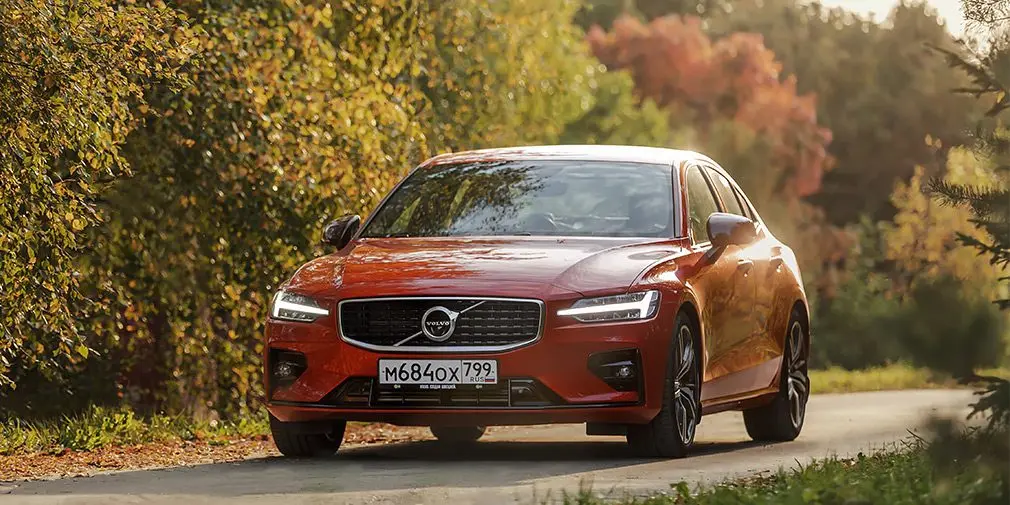
The crossover received motors from the new Drive-E line. The main characteristic of the new power units is a large, powerful one with a relatively fast volume. For example, the Swedes managed to remove 2,0 hp from the 320-liter petrol "four". and 470 Nm, and from a turbodiesel of the same volume - 224 hp. and 400 Nm of torque. Of course, new engines, like any other modern turbocharged units, are sensitive to fuel quality. But not enough to always refuel at the same network filling station, Volvo experts admit.
A small motor for a big car is an important attribute if the Swedes decide to conquer geeks. On the first generation XC90, the most requested engine was the 2,9-liter petrol "six" with 272 horsepower. It was such a crossover that I spent in my family for a whole year. The old T6 was remembered for its insatiability: in the urban cycle, the average consumption could easily exceed 20 liters, and on the highway, it was not an easy task to meet at least 13. In the new XC90, everything is completely different: 10-12 liters in the city and 8-9 - on the road. But the sensations from driving are different - computer.
With the new motors, the XC90 accelerates too linearly, without a noticeable kick. In the urban cycle, there is still enough enthusiasm, but on the track when overtaking, the lack of traction is already noticeable. The difference between a gasoline and a diesel engine can be noticed just by looking at the tachometer or at the readings of the on-board computer. There, the electronics on a diesel car will certainly write at least "700 kilometers to an empty tank" after a full refueling. The car running on heavy fuel does not have any vibrations, and the D5 is quieter than many gasoline engines.
How do you turn the XC90 salon into a concert hall?
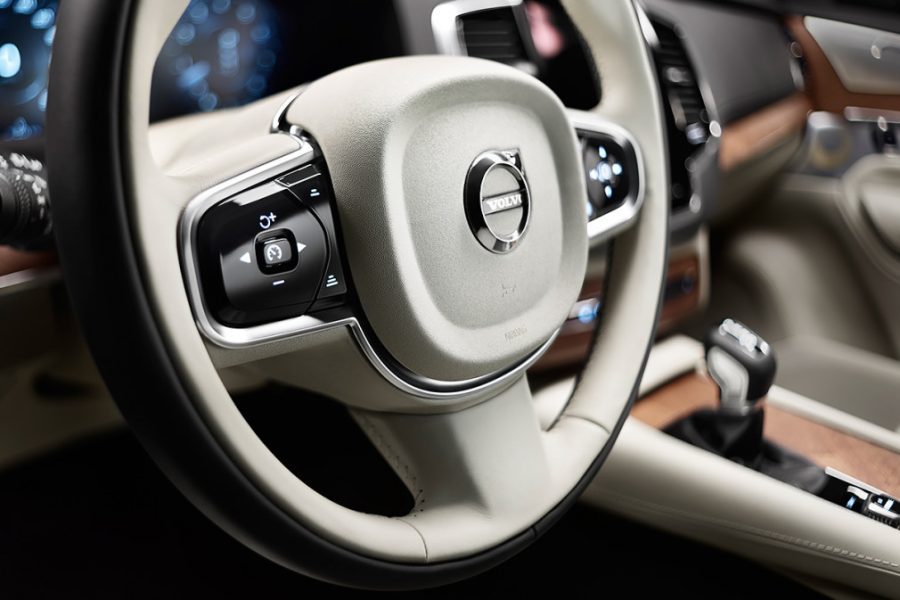
While the multi-link suspension regularly works out all the irregularities on the way from Stavropol to Mike, we listen to Maria Callas in the concert hall of Gothenburg. You can activate this effect in just two clicks. By the way, doing this is much easier than setting the desired equalizer settings. In the hope of understanding the acoustics, I press the Volvo on Call button. There is a forest around, there is no cellular network, and the car is ringing somehow. Within 5 minutes, the specialists transfer the call to each other, but in the end no help was needed: we figured it out ourselves, calling up an almost hidden menu.
People who have never held gadgets more difficult than an iPhone should first study the menu in detail and outline important consultant notes at the car dealership. Almost anything can be customized in Volvo: the level of personalization here makes the Smart, with its two-tone body, seem like the most alien car in the galaxy. The seats rise, pump up, deflate, move apart and even expand, absolutely any information can be displayed on the dashboard screen, and the multimedia system, if desired, can be turned into a huge mobile phone. There is only one miscalculation: the Krasnodar landscapes outside the window Volvo engineers have not learned how to tune.
If the XC90 becomes completely sad, then you can even talk to the car. Volvo will patiently listen to wishes about the temperature in the cabin, rewind the track and find the right place on the map and pave the route to it. And he won't even interrupt if you hesitated with a decision. However, the system will not console you after losing your job at Gazprom - it still has very limited functionality.
The interior of the crossover is replete with original solutions. Take the motor start lever, for example. Have you seen something like this somewhere? To wind the XC90, you need to turn the small engraved washer to the right. Only the recoil starter in the front bumper is cooler. But the driver and the car are no more close than Capello and the RFU: all manual work on the lever begins and ends on it. The parking brake (which, of course, is electrically operated here) is tightened by the system on its own, you do not have to touch the fifth door to open it, and there is nothing to look under the hood at all - you are afraid to break the tiny handle every time you need to top up the washer fluid.
With the debut of the new generation XC90, there is less doubt about the premium brand identity of the Volvo brand. The interior of the crossover is one of the highest quality in the modern automotive industry: minimal gaps, a complete absence of backlash even in plastic panels and a line on the seats that is flat as the horizon.
10 kilometers from Lago-Naki, when the road had finally come to naught, in the area of the C-pillar something began to rattle violently. I stop and, in a panic, start looking for a problem spot: has the interior really lost its solidity, as soon as the crossover slid onto a very bad Russian road? But no - the reason for the rumble in the cabin was a bottle of cola that treacherously fell out of the cup holder.
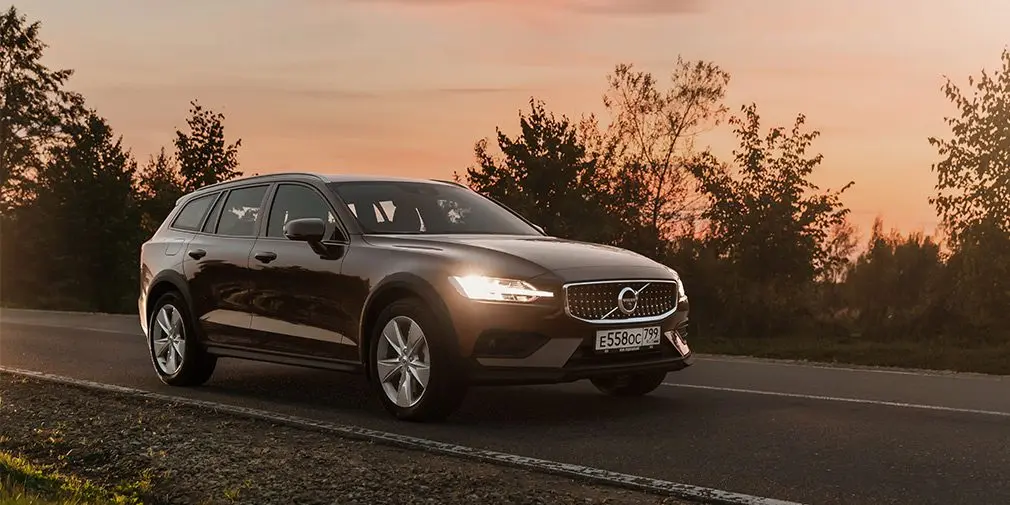
Why is the XC90 not like any other Volvo?
The effect of a foreign country always works when presenting any novelty: you come to Moscow and exactly the same model against the backdrop of our landscapes does not seem as bright as in some Spain or Italy. The XC90 is an exception. Never before has Volvo made such charismatic cars - a cunning squint of head optics, a massive radiator grille, straight lines of the body and branded lights. At the same time, the Swedes retained the family features of Volvo, such as the “window sill” in the area of the window pillars.
The XC90 is the most expensive model in the Swedish brand's lineup. So far, the novelty can be ordered in Russia only in two versions: D5 (from $43) and T654 (from $6). One of the main competitors of the XC50 is the BMW X369. A crossover with a 90-horsepower engine will cost a minimum of $5. But there is no leather interior ($306) or LED optics ($43), and you will have to pay another $146 for parking sensors. With a set of comparable options that the XC1 already has in the base, the Bavarian crossover will cost about $488. Mercedes-Benz GLE 1 with a 868-horsepower engine, which has a similar set of equipment in the starting version, costs from $600.
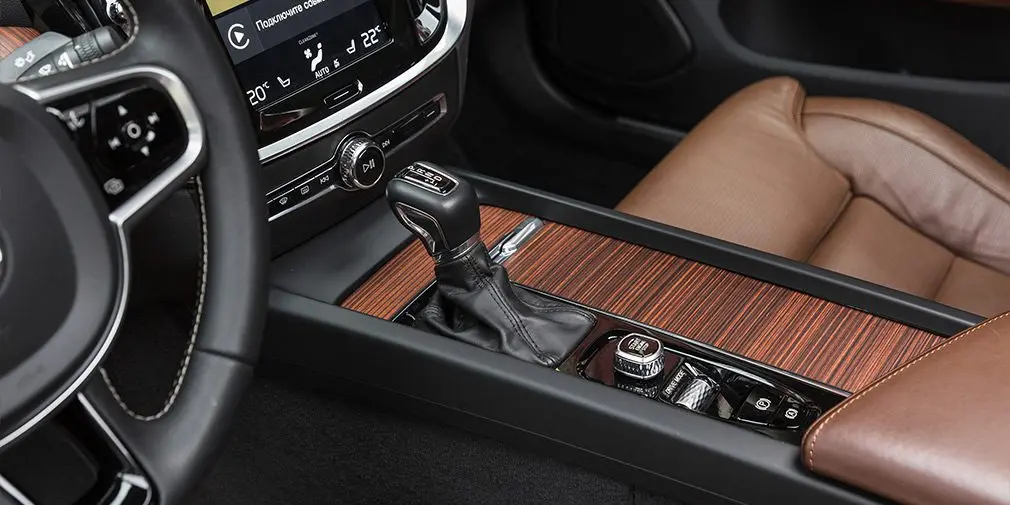
The main ideological rival of the XC90 is the new Audi Q7, which debuted on the Russian market this year. The car is sold in two versions: petrol (333 hp) and diesel (249 hp). Cars cost the same - from $ 48. With leather interior, matrix headlights and heated windshield, the crossover will cost almost $ 460.
Thus, in comparable trim levels, the XC90 is still cheaper than its direct competitors. Another thing is that in the basic version Volvo offers a too common crossover - there is no air suspension ($ 1), instrument projection ($ 601), adaptive cruise control ($ 1), navigation system ($ 067) and Bowers acoustics & Wilkins ($ 1). So talk about drones later.
